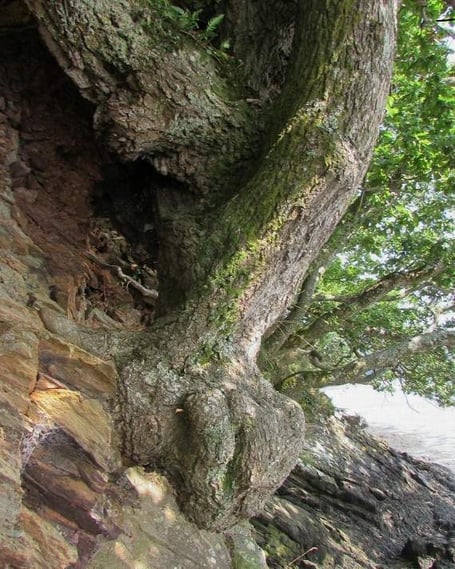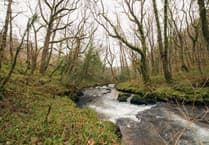National Tree Week witnessed the beginning of the Dart Ria Oak Project.
South Hams Tree Wardens worked in collaboration with Kingswear Parish Council to initiate the Dart Ria Oak Project.
At the end of last month, 250 Ria Oak acorns were planted on a parish council owned piece of land to start the project which has been created to begin the propagation of this unique species.
The Ria Oaks in south Devon are very different from upland sessile oaks which would never survive in these habitats.
These trees have different structures to other oaks and the timber has immense strength so in the past it was valued for sculpting ship figureheads.
The trees are of great cultural value because the history of the Ria estuaries is intertwined with these trees. However, the trees are disappearing.
All trees across the South Hams are being threatened by pests and diseases, soil compaction from changes in agricultural practices and an increased frequency of salt laden winds dumping more salt on the soils the trees rely on.
Storms are also eroding the already fragile soils and there are now fewer trees available to replace and maintain the landscape.
Pip Howard, a tree warden in the South Hams has a particular interest in the ancient woodland bordering the Ria estuaries and the deep valleys.
The project has three strands. Firstly, using historical documentation, the aim is to define the changes to the landscape in the last 250 years.
This will help to identify the areas at greatest threat and the areas is the woodland which have remained untouched and are therefore of high value.
The project will also be assessing soil by testing and creating a collection of different soils from the watershed areas. This is vital due to the genetic variation of the trees which are site specific.
Lastly, the project will be undertaking a replanting exercise involving schools and other community groups within the watershed communities to identify the trees of greatest value to local people.
This November was the beginning of this process and acorns were gathered from three sites.





Comments
This article has no comments yet. Be the first to leave a comment.